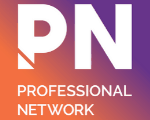How to Use Your Body in a Speech
Body language is essential when you are making a speech because it helps you connect with and to convince their audience. It is critical to the success of your presentation because your use of your body transmits visual cues to the audience and determines their reaction to your speech. Body language can either make you appear convincing and engaging or leave the audience bored, perturbed, or even hostile.
So what is body language, and why is body language important and how can you improve your body language when you are speaking?
What Is Body Language?
Body language is the use of different parts of the body to communicate and connect with the audience. It is the use of the body to transmit cues and vibes that nudge the audience into embracing a particular position or perspective. It can involve making eye contact, adopting different postures, using facial expressions, hand gestures, and movement when making a presentation.
Why Is Body Language Important?
Body language is important because the you as the speaker are part of the visuals that the audience sees during a speech. It can either win over the audience’s attention and hearts or leave them unconvinced and agitated. Therefore, you need to make the right postures, facial expressions, and movements because the audience is subconsciously watching every action you make and will react accordingly.
How to Improve Your Body Language
1. Hands
As a speaker, you should learn how to improve your body language by making good use of your hands. Keep your hands at your side as a default resting position. Keeping the hands still helps the audience focus on what you are saying rather than where you are doing with your hands.
2. Gestures
Improve your body language by making the right gestures and movements as you speak. Use gestures to demonstrate, point at visual aids, and stimulate audience participation. Gestures reinforce your claims and keep the audience engaged. However, only gesture sparingly so that the audience does not feel that you are overly persuasive or dramatic.
3. Posture
Adopt an upright posture and a posture that exudes confidence because the audience will struggle to believe in you if you do not believe in yourself.
4. Stage
Learn how to control the space on the stage, so that all the focus is on you. Make movements and gestures that give the impression that you are comfortable with being the center of attention. Movement makes you exciting and engaging because it injects life into the presentation. Make maximum utility of the stage but do not over be over dramatic.
5. Facial Expressions
Let your face accentuate what you are demonstrating with your hands through facial expressions. Make facial expressions to emphasise critical points and convince the audience that your argument is valid. Practice facial expressions in by rehearsing the speech in the mirror and making sure you have facial expressions that are in sync with the important points.
6. Smiling
Wear a positive face even if you are nervous because the audience will be more receptive to speakers who look calm and composed than those who look uncomfortable. Smile several times because the audience will be hard-pressed to not reciprocate and like you.
7. Eye Contact
Make eye contact with the audience while speaking because it helps you look sincere, credible, and confident. Look at different people for a few seconds throughout the presentation and ensure that you make eye contact. However, avoid staring at people because you can make them nervous or uncomfortable.
8. Face Your Audience
Finally, face your audience as much as possible when speaking because it will look awkward and you lose connection with your audience when you are facing away from them. If you have visual aids, put them on the side so that you will still be facing forward when using them. Face the audience when emphasising or explaining points to make a connection and gauge the reception of your message.
Conclusion
Body language is critical to effective speeches and presentations. It involves using the body to send the right message to the audience and keep them engaged throughout your speech. Body language acts as a subtle form of communication the audience uses to make the first impression of a speaker. You can improve your body language by adopting good presentation habits and practicing them until they become second nature.




